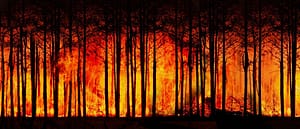Disclosure: This post contains affiliate links. These mean that I will receive a small commission should you click on the link and make a purchase. This will be at no additional cost to you. Such links in the text are followed by (£) to indicate they are affiliate links. I value my editorial independence and write my honest opinions and reviews.
The dark side of tourism
At the time of writing it is International Dark Skies Week so it seems appropriate that I should be reviewing the book by Valerie Stimac, Dark Skies: A Practical Guide to Astrotourism (£).
What is Astrotourism? To find out read the post Astrotourism: What is it? Simply put it is journeying to witness an astronomical event or a place noted for it celestial views.
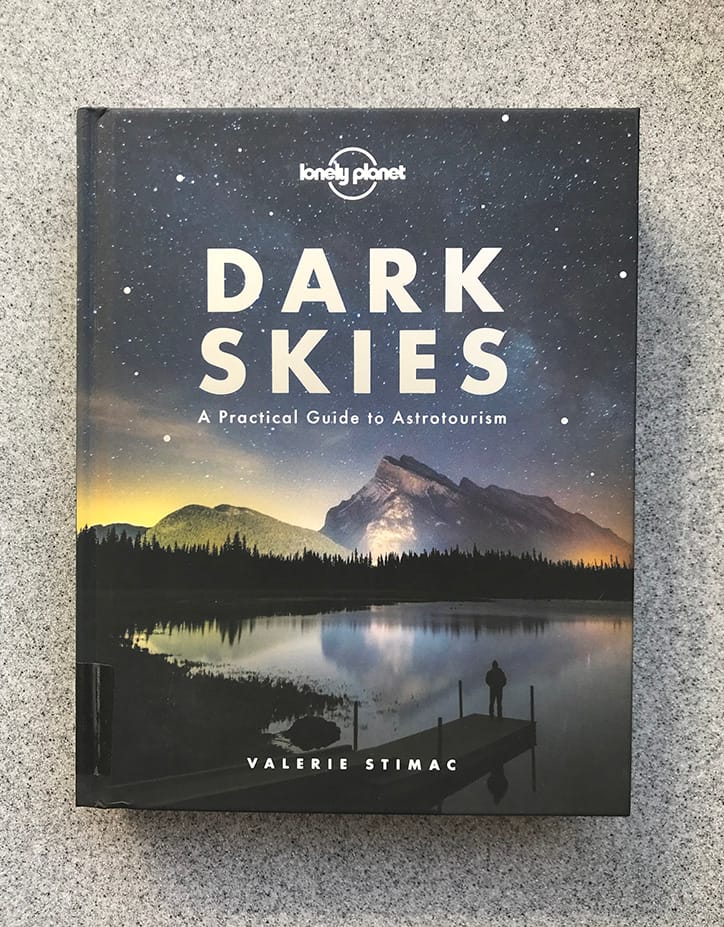
Science or travel? Or both?
The danger when covering a subject such as astronomy is for the book to read like a scientific journal. Valerie Stimac has avoided this pitfall and starts by introducing the subject of astronomy in layman’s terms. Included are brief details on stargazing, astrophotography and citizen science all of which could take a book each to cover in depth.
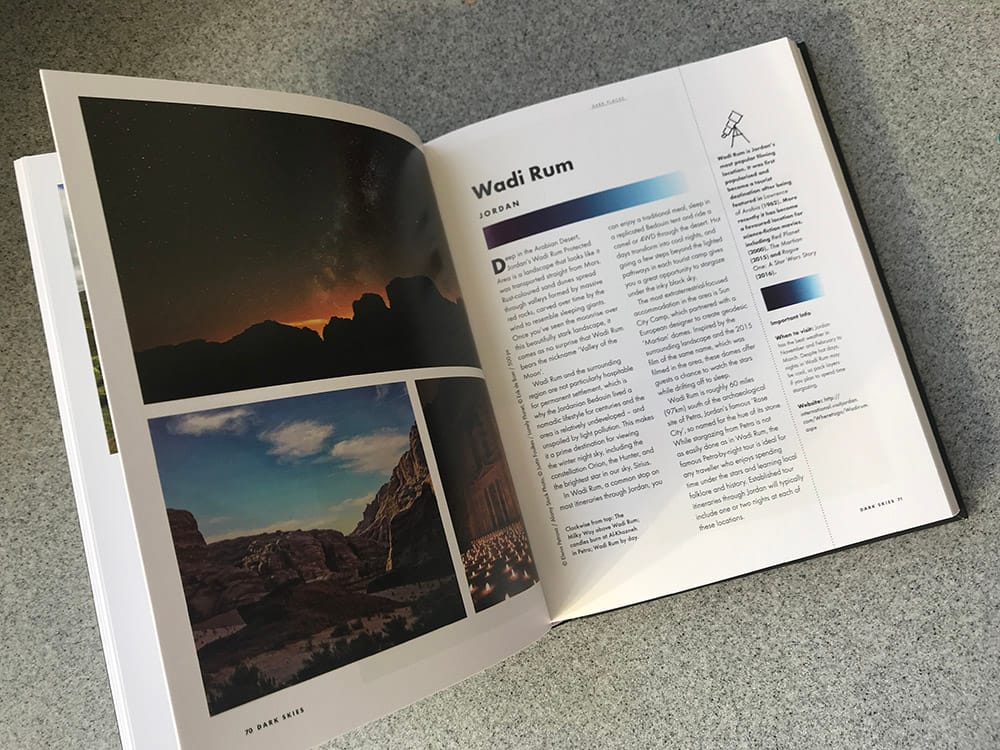
Dark places
The largest portion of the book Dark Skies (£) is devoted to dark places. These are places where light pollution is non-existent and are ideal for stargazing. Many of them are designated Dark Sky Reserves; places protected from development that causes light pollution.
The dark places covered in the book include the Namib Desert, Wadi Rum in Jordan, Exmoor National Park in England and Aoraki MacKenzie Dark Sky Reserve, New Zealand. These are just a sample of those covered in Dark Skies. The author has not included an exhaustive list but rather highlights some of those to add to that bucket-list.
Other astronomical phenomena
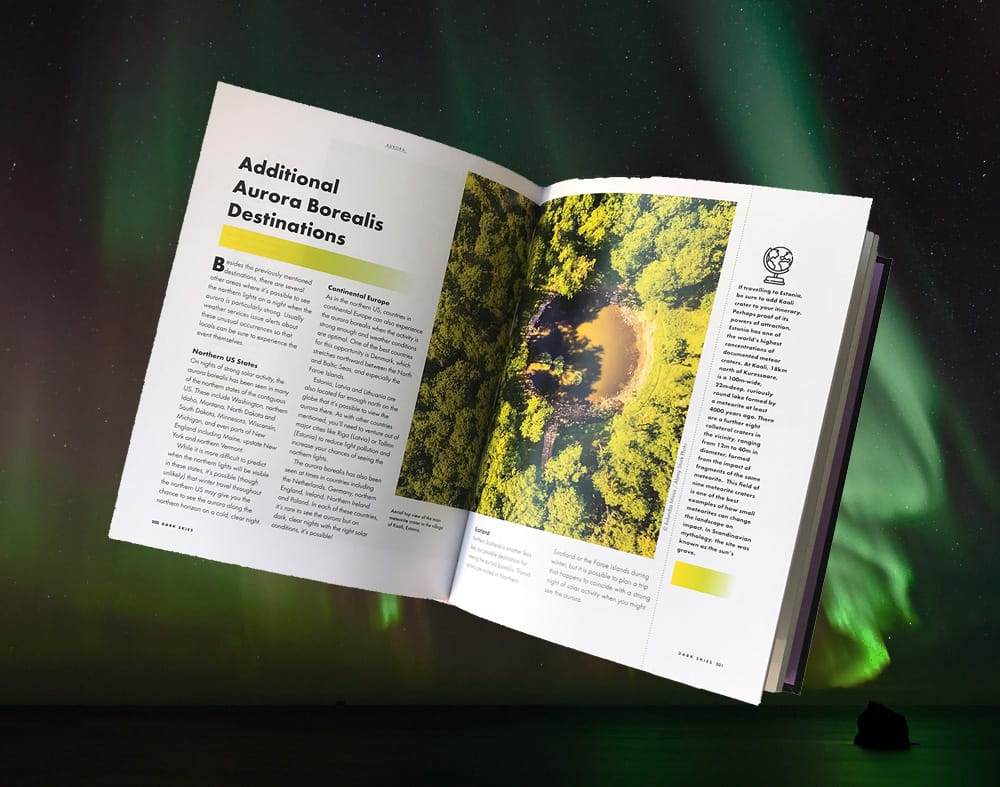
The stars are not the only astronomical phenomena. Meteor showers, eclipses and both the aurora borealis and aurora australis attract astrotourists. Each section follows the same format. There is a brief explanation of the phenomena in question and some hints on how best to view it. This is followed by more detailed information on where to see the phenomena.
Eclipses are far more predictable than say the aurora and are at very specific times and follow a predictable path across the planet. The author deals with all total solar eclipses up to December 2028.
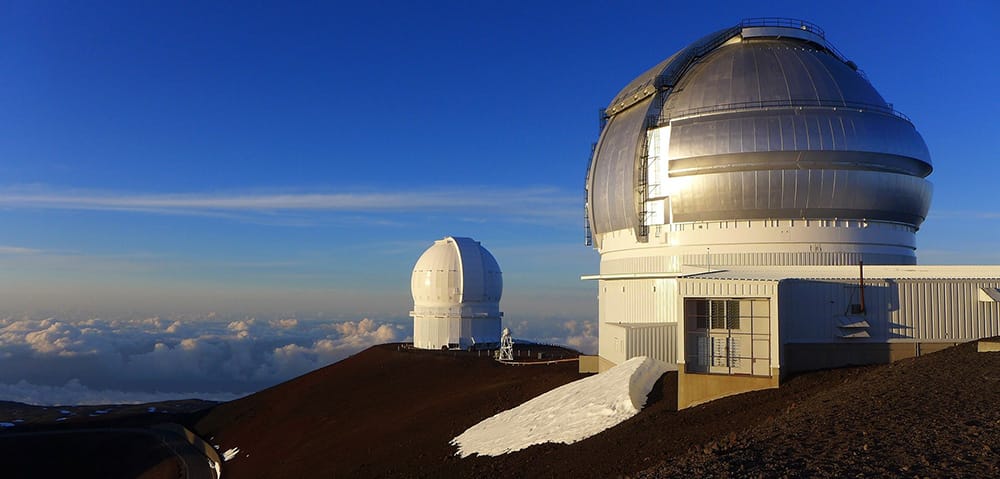
Man and astronomy
Finally, there are “down to Earth” sections. Many observatories open to visitors as do space centres in those countries with space programmes.
Space flight launches and where to view then are also covered. Looking to the future the author also covers space tourism, something that will be possible in the not too distant future.
Conclusion
If you are interested in astronomy and either base your travel around astronomical places or events or wish to see what your chosen destination has to offer astronomically then this is a book for you.
Dark Skies will definitely be a permanent part of my travel reference library.
Purchase the book from Amazon – Dark Skies: A Practical Guide to Astrotourism (£)
Alternatively click on the image on the right. They will take you to the same page on the Amazon (UK) website
Author: Valerie Stimac
Publisher: Lonely Planet
ISBN: 978 1 78868 6198



